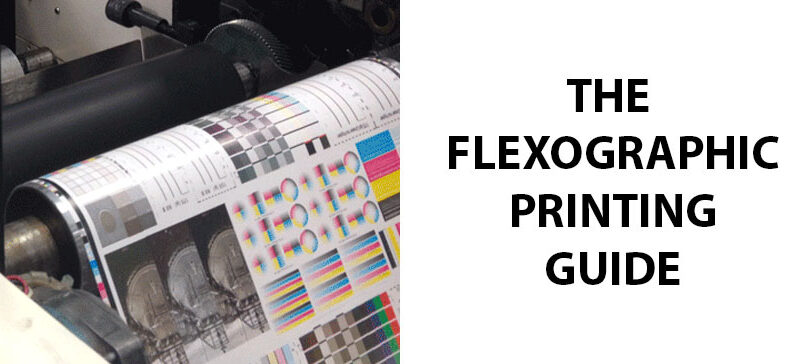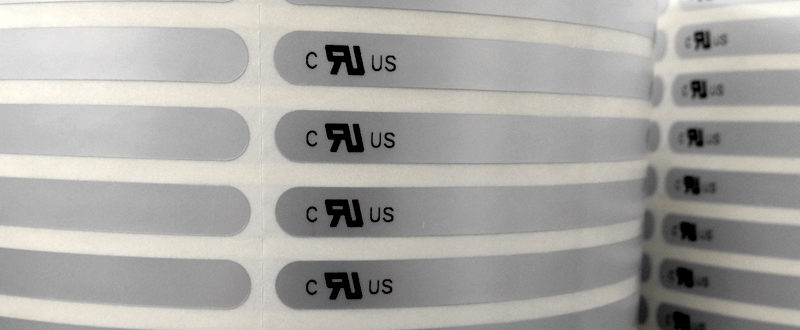In this flexographic printing guide, we walk you through all things flexographic printing and flexographic labels from start to finish. Flexographic printing is the ideal option for your labels and packaging. If you’re new to the concept of flexography, our guide will show you the benefits of this beneficial printing method.
What is Flexographic Printing?
What is flexographic printing? Flexographic or flexo printing is a modern approach to custom labels and packaging. It’s an efficient process for you that yields a finished product of really high quality in a short amount of time. One of the best things about flexo printing is its versatility because you can use flexographic labels for a lot of different manufactured goods.
Flexography comes from the Latin term “flexus” which means to bend and references that you can use this printing process on any material of flexibility.
The concept of flexo printing started as a type of print that involved rubber stamps, with the first flexographic press being manufactured in 1890. Over time, the machinery has evolved and become more sophisticated, replacing work previously produced by more traditional printing methods.
You get a lot of advantages with flexo printing, but the one that gets the most attention is how quickly it produces labels. That’s why we made this flexographic printing guide. With our flexography equipment, several rolls of printed labels on multiple different substrates can be produced quickly and be very high quality. The nature of the product makes it the perfect solution for packaging for many commercial goods including food and beverages.
The Flexographic Printing Process
When you start the printing process, a roll of material is unwound and pulled through several rotary printing stations. At each station, a flexible printing plate is loaded with the desired ink color. Only once the material has passed through all the necessary ink stations do you get the completed image.
From there, you can emboss, laminate, and/or die-cut your flexographic labels. You can use these processes in the flexographic system for quicker production times and tight registration tolerances.
Flexography and Other Printing Methods
Technology and innovations have allowed flexo printing to become one of the most popular choices for cost-effective, high-quality printed products including pressure-sensitive labels. You should know that there are a lot of differences between flexography and other printing methods mostly based on how you generate and apply the image. Here is a quick look at some common alternate technologies:
Offset Lithography
With offset lithography, your image is initially inked on a plate and then moved to a carrying medium before its final application on your selected substrate. Flexography, by comparison, is an inline printing process where the ink moves from the plate directly to your chosen substrate.
Rotogravure
Rotogravure (or gravure) printing inks an image onto your material through the use of metal plates. The surface of the metal plate has the impression of your image. This sunken area is then loaded with ink with the extra removed prior to making a printed impression on the substrate. Flexographic printing in comparison relies on raised flexible polymer plates to create your image.
Digital Printing
Digital isn’t a single uniform printing process, but it’s actually a catch-all term for a variety of printing technologies that use software instead of printing plates to create an image. Ink is usually either applied to a blanket (similar to offset lithography) or you can jet it directly onto the material using ink heads.
Flexo Materials
The beauty of flexographic labels is in their flexibility. Flexography works with a wide range of different materials, which in the case of labels allows companies to customize for their application. We most commonly see these materials:
- Acetate
- Laminated Foil
- Polycarbonate (e.g. Lexan™)
- Kimdura
- Kraft (unbleached brown paper)
- Multi-layered (coupon or piggyback) stock
- Nylon
- Paper
- Polyester (e.g. Mylar)
- Polyolefin
- Polypropylene
- Tag (non-adhesive)
- Tyvek
- Vinyl
Flexographic Printing Options
In the end, flexography has become an efficient and innovative printing technology that can be used to make a wide variety of label solutions to meet your needs. And this is just one arrow in our quiver at Coast Label Company. As I mentioned above, flexographic printing stations can be combined in line (or offline) with converting sections and specialty print sections to provide several different options including:
- Die-cutting
- Laminating
- Embossing
- Specialty inks
- Cold foil
If you need some help with flexographic printing or if you just need some help in general with your flexo labels, you can click here to request a proposal. Let us know if you have any questions. We hope this flexographic printing guide has been useful for you. Just let us know if you need more help!



